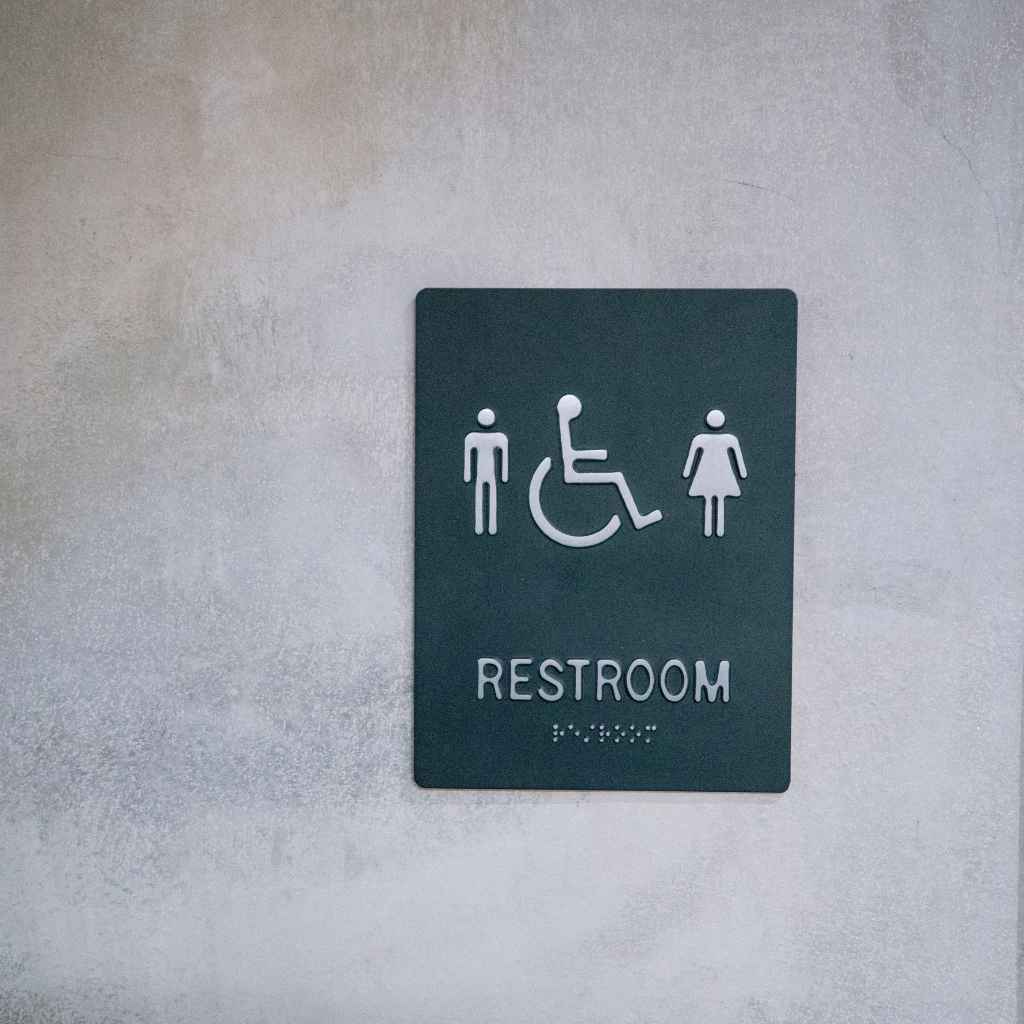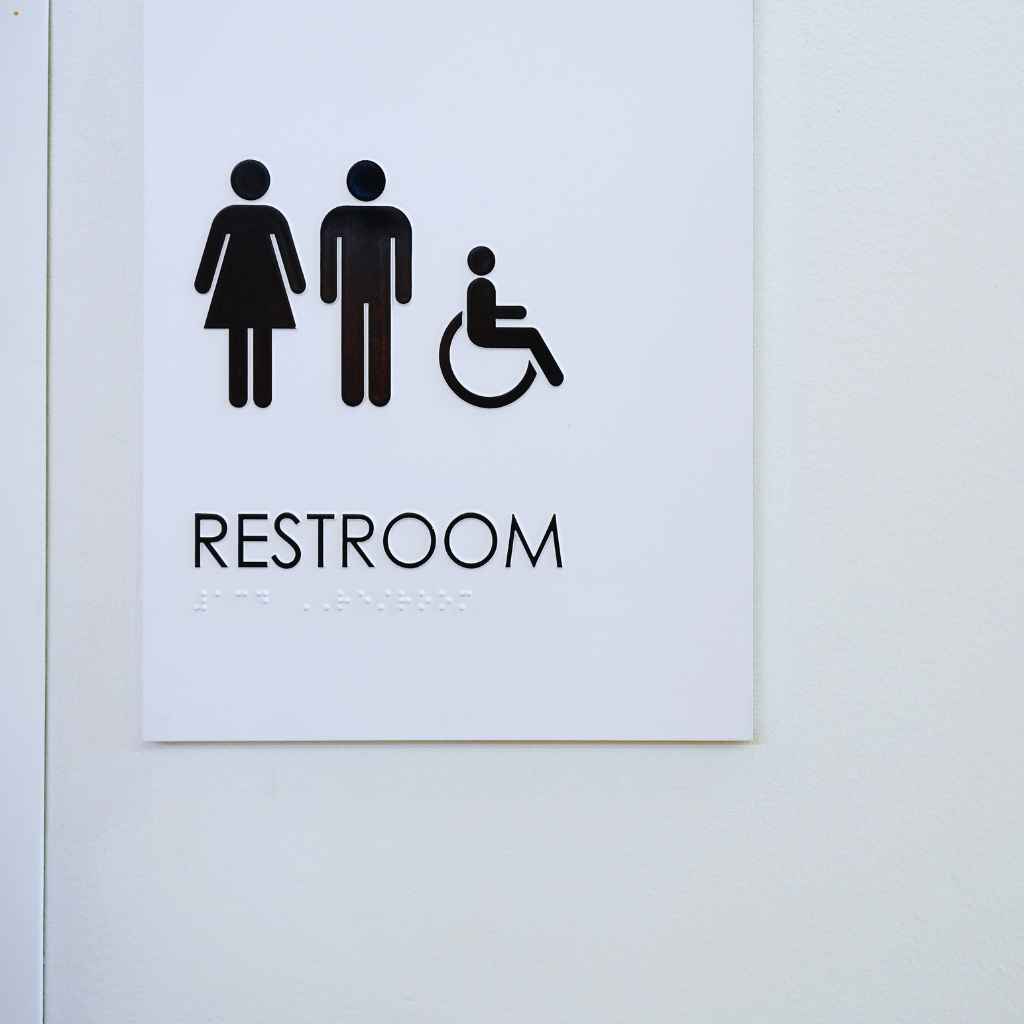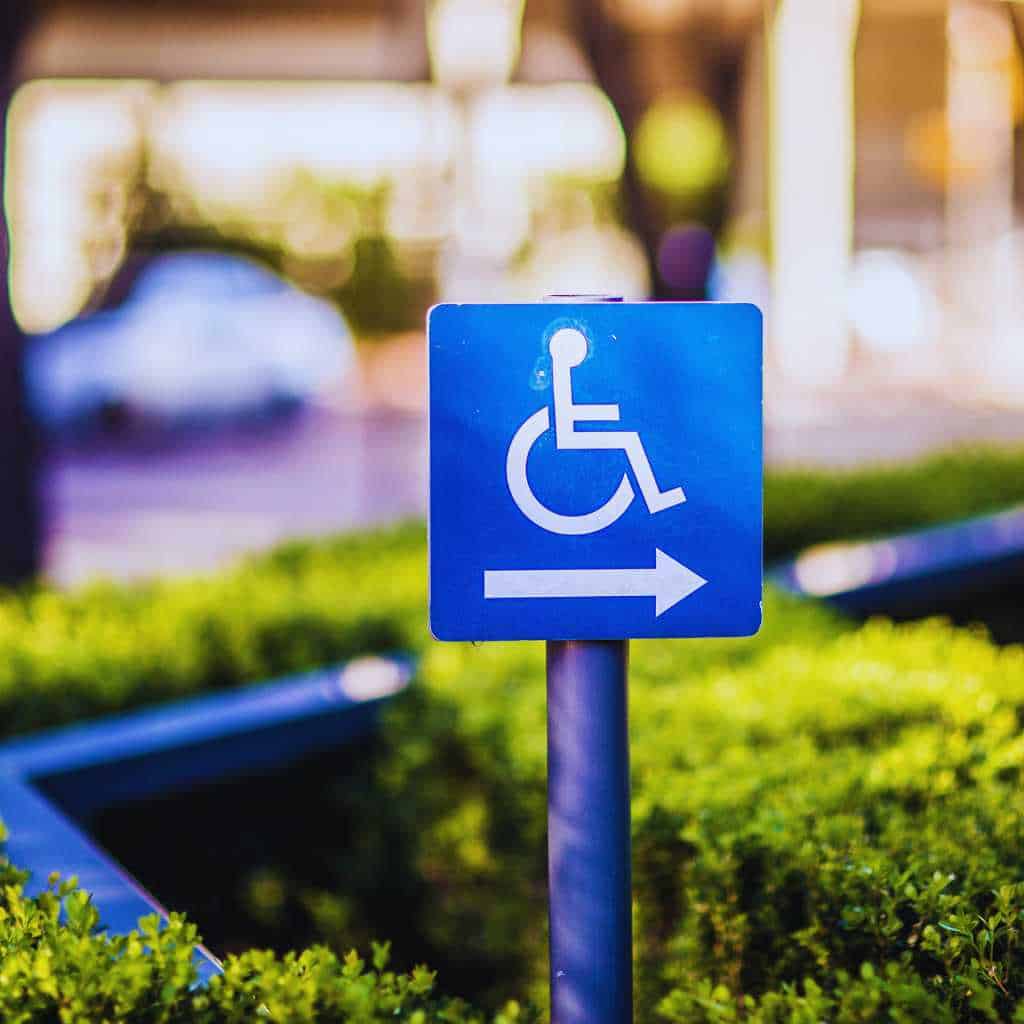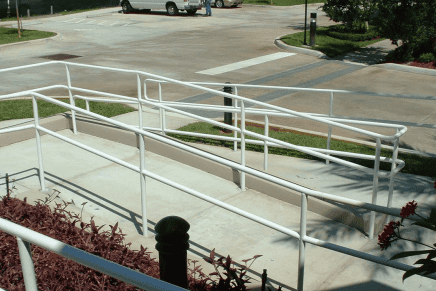How to Read a CASp Report | Plain-Language Guide for California Property Owners

A Certified Access Specialist (CASp) report is a legal document that evaluates whether a property meets California accessibility standards under ADA and Title 24. It outlines existing violations, explains what needs to be fixed, and provides a timeline for achieving compliance.
If you’re a commercial landlord, property manager, HOA, or developer, this report isn’t optional. It’s often your only legal defense against accessibility lawsuits but only if you understand it and take action.
The problem? Most CASp reports are written in code references and technical terms that don’t explain what’s urgent, what can wait, or how to priorities repairs.
This article walks you through
each section of a real CASp report: what the codes mean, how to priorities items based on legal exposure, and how to avoid common mistakes that leave you open to serial lawsuits. You’ll come away knowing exactly what to do next and how to use the report to your legal advantage.
What Is a CASp Report and Why Does It Matter?

A CASp report is a written inspection document prepared by a Certified Access Specialist that outlines how your property does or doesn’t comply with the Americans with Disabilities Act (ADA) and California’s Title 24 accessibility standards.
If you own or manage commercial property in California a storefront, office complex, restaurant, gas station, or multi-unit building there’s a good chance you’ll be asked for this report during a lease negotiation, sale, or lawsuit. The document itself isn’t optional in most practical settings anymore. And if you’re served a disability access complaint, having a valid CASp report can significantly change how that legal process plays out.
Here’s what that means: a CASp report doesn’t just list violations. It can protect you legally but only if it’s done correctly and you act on it. This section breaks down what you’ll find in the report, and how it connects to your legal rights as a property owner under California law.
What Does a CASp Report Contain?
CASp reports follow a standard structure that certified inspectors across California are trained to use. While the format can vary slightly, the core sections typically include:
Inspector Credentials: Every report begins with the name and certification number of the Certified Access Specialist who conducted the inspection.
Findings and Violations: This is the part most owners care about. It lists physical elements of your site doorways, paths of travel, parking, restrooms, etc. and whether they meet ADA and Title 24 requirements. Each non-compliant item is flagged.
Applicable Code Citations: You’ll see direct references to ADA and California Building Code (CBC) sections tied to each issue. This helps your contractor or architect understand exactly what needs fixing.
Photographs: Most reports include site photos taken during the inspection, often with arrows or highlights showing violations.
Remediation Schedule or Recommendations: In some reports, the CASp will provide a suggested timeline or priority list for correcting issues. These aren’t legally binding, but they help you create a compliance plan.
Status Statement (if requested): If you requested a Disability Access Inspection Certificate, the CASp will include a compliance status either “inspected” or “inspected and determined to meet applicable standards.”
If you’re reviewing this for the first time, focus on the findings and citations. That’s where the legal exposure lives.
Legal Protections Offered by CASp Reports in California
Yes, a valid CASp report gives you legal protections that most owners don’t realize exist until they’re sued.
Under California Civil Code §55.53, a property owner or tenant who has a current CASp report and has taken steps toward correction becomes a “qualified defendant.” That label means three key things:
You get a 120-day window to correct violations before certain lawsuits can proceed.
Statutory damages may be reduced from $4,000 per incident to as low as $1,000—if you’re actively addressing issues.
You can request early evaluation conferences to potentially resolve complaints faster and avoid prolonged litigation.
Here’s the catch: the report alone isn’t enough. You must also request a Disability Access Inspection Certificate from the CASp inspector and start or plan remediation in good faith.
Why this matters: without these protections, serial plaintiffs in California can file lawsuits immediately, with no warning, demanding $4,000 per barrier and attorney’s fees. CASp status gives you a buffer and a path to fix things before it escalates.
For small businesses, multi-tenant properties, and older buildings, this can mean the difference between a manageable repair budget and a lawsuit that wipes out your cash flow.
Section-by-Section Breakdown of a CASp Report
You’ve got the report in hand. Now what?
Here’s how to actually read the thing line by line, page by page so you can understand what’s wrong, why it matters legally, and what to fix first.
Cover Sheet and Report Metadata
Start with the cover page. It sets the legal and technical context.
You’ll see:
Inspection date and site address
Certified Access Specialist ID number and expiration date
Client name (owner, tenant, or both)
Scope of inspection — whether it covered the full site or limited areas only (e.g. just restrooms or parking)
Legal disclaimer: The CASp will include a statement clarifying this is not a construction document. It’s an accessibility evaluation under ADA and Title 24. This matters because you can’t hand this to a contractor and expect it to double as a spec sheet it’s not designed for that.
If you requested a Disability Access Inspection Certificate, the cover will also indicate the property’s inspection status (typically “Inspected” under §55.53).
Accessibility Findings Summary
This is the core of your report the list of violations and their severity.
Most CASp reports use a tiered or color-coded system to signal priority. While there’s no universal template, here’s how severity often breaks down:
Immediate Concern – safety hazard or lawsuit trigger (e.g. no accessible path of travel)
Barrier to Access – fails ADA/CBC and affects usability (e.g. sink mounted too high)
Readily Achievable – easily fixable items (e.g. wrong sign, incorrect faucet handle)
Deferred or Structural – larger scope repairs needing design or permits
Some reports include symbols, flags, or colored boxes. Red often signals urgency. Green means compliant. Yellow could be borderline or pending verification.
Pay close attention to “readily achievable” items. These are the ones serial plaintiffs often target cheap violations with expensive consequences if ignored.
Code Citations: ADA vs California Title 24
Every finding will reference two codes side-by-side:
ADA Standards for Accessible Design (federal)
California Building Code, Chapter 11B (Title 24)
Here’s why that matters: California requires compliance with both. You can’t choose one over the other. And in many cases, Title 24 is stricter.
Example:
ADA §604.3 requires 60″ clear space at toilets.
CBC §11B-604.3 might require more, depending on fixture type or stall design.
Miss one and you’re out of compliance, even if the other standard is met.
Common confusion areas include:
Mirror height (measured to bottom edge in CA)
Door closing pressure
Signage fonts and mounting locations
This is where your contractor can misstep if they don’t know California law. Don’t assume ADA-only compliance is good enough in this state.
Photos and Diagrams
These are not just for show.
Every photo in the report is tied to a specific finding. Look for numbered annotations, arrows, or labels that correspond to the violation list.
Let’s break that down:
If the report says your ramp slope exceeds 1:12, there’s likely a photo showing the measurement sometimes with a level tool visible. If a restroom lacks proper knee clearance, the image might include a tape measure against the fixture.
Use the photos as a reality check. Go to the actual spot on-site and match what you see with the report. It’s one of the best ways to confirm whether the issue is real and actionable or possibly a misunderstanding that needs clarification.
Barrier Removal Recommendations
This is where the report starts guiding action and where most owners ask:
“What do I fix first?”
CASp reports usually include a list or table suggesting:
Priority level (high, medium, low)
Potential fix
Notes on feasibility
In legal terms, the ADA uses a “readily achievable” standard meaning you’re expected to remove a barrier if it’s easy to do without much difficulty or expense, relative to your resources.
Start with these:
Inexpensive but legally critical items (e.g. signs, grab bars, incorrect door hardware)
Elements tied to known high-litigation areas (e.g. parking lots, restroom access, ramps)
If you operate in a city like San Diego, Los Angeles, or San Francisco, keep in mind that local permitting requirements can kick in fast especially for restroom renovations or path-of-travel work. So while the CASp report gives you a remediation roadmap, always loop in a licensed architect or contractor to confirm what triggers local plan review.
Don’t stall out at this point. The longer you wait to address the list, the greater your exposure to lawsuits especially if your inspection date becomes public record via a Certificate posting.
What to Do With Your CASp Report After Receiving It

Yes, there’s a right way to respond once you get your CASp report and doing nothing isn’t it. The report isn’t just a checklist. It’s a legal and strategic tool. What you do next can determine whether your property becomes compliant or remains exposed to lawsuits and fines.
Let’s break down what smart property owners, managers, and tenants should do once the inspection is done and the CASp report lands in your hands.
Create a Remediation Plan
Start by going through each listed barrier in the report. Write out:
What the barrier is
Which code(s) it violates
How urgent or risky it is
Estimated cost to fix it
Who will be responsible
Target completion date
This isn’t just paperwork. If you’re sued and have an active remediation plan, California law can reduce your liability. You’ll be viewed as a property owner actively working toward compliance.
👉 For restroom-related findings, it’s smart to connect with professionals who specialize in ADA bathroom consulting—restroom errors are among the most common violations.
Work With Professionals Familiar With ADA and Title 24
Not all contractors or architects know accessibility law. Hiring someone who “does bathrooms” or “pours concrete” isn’t enough. You need professionals who understand both federal ADA standards and California’s Title 24 CBC Chapter 11B.
Here’s why it matters:
Let’s say your contractor installs a ramp with the wrong slope. It looks fine but it fails inspection. Now you’ve wasted time and money, and you’re still non-compliant. We’ve seen this happen more than once.
Stick with licensed contractors who’ve worked on CASp remediation projects before. If you’re unsure, ask to see past work or confirm they’ve read your CASp report.
Schedule a Follow-Up CASp Inspection
Once you’ve completed the required fixes, schedule a follow-up inspection with a Certified Access Specialist. This gives you two big advantages:
Updated legal protection — If your original inspection was pre-litigation and voluntary, a follow-up can help maintain your “qualified defendant” status under CA Civil Code §55.53.
Fresh documentation — Courts, tenants, and city inspectors often request proof of correction. A follow-up report shows good-faith effort and progress.
If you’re in a city like San Diego, it may also help smooth over permit approvals or avoid future complaints.
Common Misunderstandings About CASp Reports

A lot of confusion still surrounds what a CASp report actually is and what it isn’t. Let’s break down a few of the most common misconceptions that lead business owners to misinterpret their inspection or delay compliance.
Misconception: A CASp Is a Government Code Enforcement Officer
This one’s widespread. A Certified Access Specialist (CASp) is not a city or county code inspector. They don’t work for your local building department, and they’re not here to fine you.
They’re state-certified professionals who evaluate properties for compliance with federal ADA laws and California’s Title 24 building code. Think of them more like a legal advisor for your building’s accessibility—not a regulator.
Why this matters: A CASp inspection is proactive, not punitive. You’re hiring someone to help you spot problems before a lawsuit does. No one’s coming after you with citations unless you ignore the report.
Misconception: “Passing” Means I’m Fully Protected
Here’s the truth: a CASp report doesn’t make your property compliant. It documents where it stands today and provides a roadmap for correction. Until you fix the issues, the legal exposure is still there.
That said, once you’ve had a CASp inspection, California law gives you time-based legal protections—including a 90-day grace period and reduced financial penalties—if you show a good faith effort to correct barriers.
So yes, the report helps. But you still have to act on it.
Misconception: The Report Is Too Technical To Be Useful
Most CASp reports are written in regulatory language. You’ll see citations like CBC §11B-602.7 and ADA §216.8, mixed with photos and charts.
If that sounds overwhelming, you’re not alone. But don’t let it freeze you.
With the right guidance, the technical language can be decoded section by section. In fact, many business owners use their reports in tandem with ADA consultants or architects to walk the site and priorities fixes. You don’t need to be a code expert—you just need to understand the impact and act.
Real-World Legal Cases That Show How CASp Reports Help (or Don’t)
What happens when you follow a CASp report — and what happens when you don’t? These real cases from California courts show exactly how things can go right… or very wrong.
Lopez v. Catalina Channel Express, Inc., 974 F.3d 1030 (9th Cir. 2020)
This case highlights the importance of proactively identifying barriers. A ferry operator failed to ensure accessible restroom facilities. Although some improvements were made, the lack of timely corrective action triggered liability under the ADA and Unruh Act. Had a CASp report been used to identify and prioritize fixes early, litigation may have been avoided.
Munson v. Del Taco, Inc., 46 Cal. 4th 661 (2009)
The California Supreme Court ruled that a plaintiff doesn’t need to prove intent to sue under the Unruh Civil Rights Act if an ADA violation is present. This set the precedent that technical violations alone can expose you to lawsuits, even if they seem minor. A CASp inspection helps document barriers and show a “good faith effort” to correct them — the only legal protection in play.
Rutherford v. Evans Hotels, LLC, Case No. 18-cv-00435 (S.D. Cal. 2020)
Serial litigation is alive and well in California. In this case, the court reviewed multiple ADA claims related to parking and website accessibility. The defendants’ lack of proactive CASp documentation made it harder to challenge the lawsuit, increasing their risk and legal costs.
These aren’t hypotheticals. They’re real outcomes tied directly to what you do or don’t do with your accessibility obligations. A well-prepared CASp report can’t prevent someone from suing you, but it can help you qualify as a “qualified defendant” under California Civil Code §55.53, giving you real leverage in the courtroom.
Need-to-Know Insights on Reading CASp Reports
A CASp report isn’t just paperwork it’s legal protection, if you use it properly. Here’s what to keep in mind as you review yours:
You’re not just checking boxes—you’re documenting a legal defence. CASp reports can position you as a qualified defendant under California Civil Code §55.53, but that status depends on timely, documented remediation. Reading it is just step one.
Title 24 isn’t optional in California. Your report will cite both ADA and California Building Code (CBC Chapter 11B). You must comply with both—federal and state law operate in parallel, and failing either can trigger litigation.
The photos and severity ratings are legal breadcrumbs. Don’t treat these like suggestions. Each marked barrier represents real legal exposure. Priority levels like readily achievable or immediate concern are tied directly to your legal risk profile.
It’s not about understanding the code—it’s about knowing what to do next. You don’t need to decode legal language alone. You need to act: fix barriers, document timelines, hire qualified professionals, and schedule follow-up if needed.
Bottom line: A CASp report only protects you if you understand what it’s telling you and act on it.
Common Questions About CASp Reports in California
Do all buildings in California need a CASp report?
No—but you’re taking a serious legal risk without one. CASp inspections are voluntary, not mandatory. But under California Senate Bill 1608 and Civil Code §55.53, having a valid CASp report and a written remediation plan can qualify you for “qualified defendant” status in ADA lawsuits. That means reduced penalties, a 90-day stay of legal proceedings, and protection from serial litigants. If you own or lease a public-facing building, you should have a report—especially if you haven’t upgraded since 2013, when California’s accessibility codes expanded.
How much does a CASp inspection cost?
It depends on the property size, layout, and complexity. Most inspections for small-to-midsize commercial buildings fall between $800 and $2,500. Larger facilities or multi-tenant sites can run higher. Keep in mind: the report is a one-time investment that can help avoid lawsuits averaging $10,000–$50,000 in settlements and attorney fees.
If you’re comparing quotes, make sure the price includes:
Site inspection
Full report with code citations and photos
Remediation guidance
Optional follow-up reinspection (some charge separately)
What’s the difference between ADA and Title 24 in my report?
ADA is federal. Title 24 is California’s state building code. Your CASp report will include both because properties in California must comply with both sets of regulations. ADA sets the national baseline. Title 24 (specifically Part 2, Chapter 11B of the California Building Code) often adds stricter or additional requirements. For example:
Mirror height limits are stricter under CBC 11B
Turning space requirements may differ in layout
Signage and restroom fixture specs vary slightly but matter in lawsuits
If you’re only using ADA guidelines, you’re not compliant in California.
Can I use a CASp report to avoid a lawsuit?
Yes—if you act on it. Just having a CASp report doesn’t automatically protect you. To qualify for lawsuit protections under California Civil Code §55.53:
The inspection must be done before a lawsuit is filed.
You must have a remediation schedule or evidence of good faith corrections.
The property must post a valid CASp inspection certificate (Form DSA-300).
This doesn’t stop a lawsuit from being filed but it can limit damages, delay proceedings, and give you a defense against opportunistic litigation.
What if I don’t understand part of the report who should I call?
Call the CASp inspector who issued the report, first. Their contact information should be on the cover page or last section. A qualified CASp consultant is required to be licensed by the Division of the State Architect (DSA) and can explain their findings.
If you’re planning a remodel or barrier removal, also consult:
An architect with Title 24 experience
A contractor who understands accessibility upgrades
A code consultant or ADA specialist if the report affects multiple tenant spaces or occupancy use types
Never rely on assumptions or DIY fixes misinterpreting the report can backfire during lawsuits or follow-up inspections.
Can I still be sued even if I have a CASp report?
Yes. Having a CASp report does not prevent lawsuits. However, if you’ve filed for Qualified Defendant status within 120 days, you gain legal protections that can reduce penalties or dismiss cases faster.
Do I need a CASp inspection before selling my commercial building?
It’s highly recommended. Buyers often request it during due diligence, and having a recent CASp report can prevent deal delays and support clean liability transfer. It also shows you’ve made a good-faith effort to comply with Title 24 and ADA.
Next Steps for California Property Owners With CASp Reports
A CASp report isn’t just paperwork it’s a legal roadmap. What you do after receiving it determines whether it protects you or sits unused while your liability grows.
Start by scheduling a remediation consult. Bring in someone who understands both ADA and California Title 24 requirements. That might mean a licensed architect, a CASp consultant, or a contractor with verified experience in accessibility upgrades. Generic contractors can miss critical code specs especially in bathrooms, parking lots, or entry routes.
Work only with qualified accessibility professionals. Don’t assume every general contractor knows the difference between ADA slope tolerance and Title 24 curb ramp specs. Missteps here aren’t just code violations they’re lawsuit bait. Ask for proof of Title 24 experience and familiarity with local permitting in your city or county.
Use your CASp report as a phased plan. You don’t need to fix everything overnight. But you do need a documented remediation timeline. That shows good faith and it’s what unlocks legal protections under California Civil Code §55.53. Prioritize high-risk, low-cost items first (signage, parking space striping, restroom hardware) and build toward larger structural changes as budget allows.
If you’re unsure what to fix first or how to avoid expensive missteps our ADA Compliance Consulting Services can help. We interpret reports, design remediation plans, and guide you through local code approval in cities across California.
Bottom line: The CASp report is your defense. But it only works if you use it.
Trusted Resources for CASp Reporting and ADA Law
- Certified Access Specialist Program – CA DSA
- ADA 2010 Standards for Accessible Design
- California Title 24 – Access Compliance Reference Materials
- CA Civil Code §55.53 – Qualified Defendant Law

Written by Emily Johnson
Emily Johnson is a Certified Access Specialist (CASp) Inspector and is passionate about making spaces accessible for all. With over 10 years of experience and degrees in Civil Engineering and Architecture, she inspires others while championing ADA awareness.
RECENT POSTS
CATEGORIES
Get a free quote today!
By clicking “Submit”, you are signing up to receiving emails from us. You can unsubscribe whenever you like. SMS rates may apply.
Want To Know More About ADA Accessibility And How To Get Compliant?
Check out our blog!








